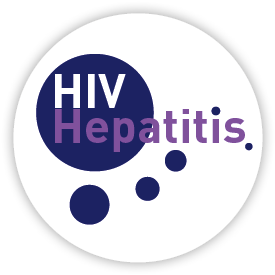Paediatric dosing of DRV/r
1 October 2015. Related: Conference reports, Paediatric care, PK and drug interactions, PK Workshop 16th 2015.
Small changes to the current World Health Organisation (WHO) recommended darunavir/ritonavir (DRV/r) dosing could improve DRV exposure in children at the same time maintaining the number of weight bands and a standard dosing ratio, according to modeling presented at the 16th International Workshop on Clinical Pharmacology of HIV & Hepatitis Therapy.
DRV/r is approved for children three years old and above and 10 kg and 15 kg and above in the US and EU respectively. Approved paediatric dosing regimens for DRV/r are different from WHO-recommended ones because different weight bands have been used. When considering a co-formulation for children, generic manufacturers will likely use a darunavir:ritonavir (DRV:RTV) fixed ratio and the WHO paediatric weight bands.
To simplify administration, WHO recommends five weight bands from 10 kg to > 35 kg and a 6:1 ratio of DRV:RTV. US approved dosing uses eight weight bands from 10 kg to >40 kg, and varying DRV:RTV ratios that range from 7.5:1 to 5.8:1.
Investigators from Janssen, the originator manufacturer of DRV, conducted a pharmacokinetic (PK) simulation to look at a regimen that conforms with the WHO weight bands and 6:1 ratio, and reaches DRV exposures comparable to those in adults.
A population PK model of DRV/r had been previously established based on pooled, richly sampled data from adult (DUET) and paediatric (DELPHI, ARIEL and DIONE) studies.
Paediatric twice daily dosing regimens using WHO weight bands and a 6:1 DRV/RTV ratio (240/40mg co-formulation) were determined, targeting 80 to 130% the exposure (AUC) achieved in ART-experienced adults receiving DRV/r 600/100mg twice daily. The investigators also compared these to the exposures predicted with the approved regimen and weight bands with DRV and RTV as single agents.
Applying current WHO recommended DRV/r dosing, the simulation revealed an AUC below 80% of the adult reference value of 62.3 ug*h/mL in the lower weight band 14 to <20kg (1 paediatric tablet 240/40mg) and above 130% the adult reference value in the weight band 25 to <35kg (1 adult tablet 600/100mg). The other weight bands were comparable.
After further simulations of AUC and PK profiles, following administration of DRV/r as 240/40mg tablets, the investigators selected a new dosing schedule that gave DRV exposures 80% to 130% the adult reference value in all WHO weight bands. This new dosing schedule is: 1 tablet (240/40mg) for 10kg to <14kg; 1.5 tablets (360/60mg) for 14kg to <20kg and 20kg to <25kg; 2 tablets (480/80mg) for 25kg to < 35kg; and adult dose as of 35kg.
Comment
These simulations by the originator manufacturer suggest that DRV dosing according to current WHO weight band recommendations might lead to either under-dosing in a lower weight band or over-dosing in a higher weight one.
The investigators suggest that simple changes to the current WHO dosing schedule could improve DRV exposure in children while still keeping to the number of weight bands and a standard DRV/r dosing ratio.
Would it be too much to ask for this work on aligning with WHO weight bands to be done as originator manufacturers conduct their paediatric investigation plans? This would help generic manufacturers develop co-formulations and FDCs that allow dosing aligned with recommendations across the WHO weight bands. It could help close the gap between when new drugs and regimens are available in low- and middle-income countries for adults and children.
Reference:
Brochot A et al. Model-based pediatric dosing of ritonavir-boosted darunavir: an alternative to WHO guidelines. 16th International Workshop on Clinical Pharmacology of HIV & Hepatitis Therapy, 26-28 May 2015, Washington DC. Oral abstract 15.
http://regist2.virology-education.com/2015/16HIVHEP/22_Crauwels.pdf (PDF)


